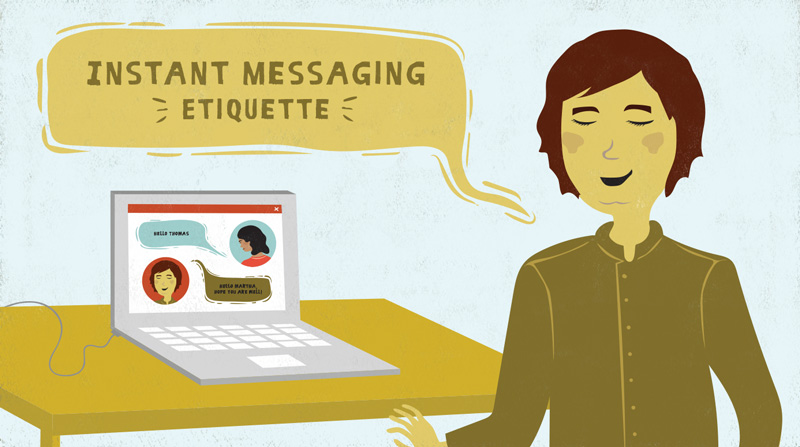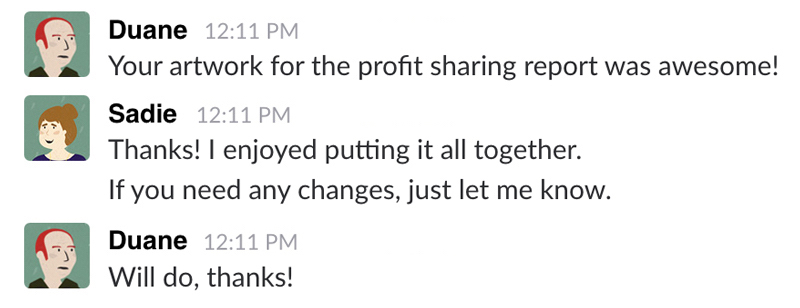Business Communication -
Instant Messaging Etiquette

Business Communication
Instant Messaging Etiquette


/en/business-communication/how-to-deescalate-an-argument-at-work/content/

Need to send a quick comment to a co-worker? Send an instant message!
Instant messaging (or IM, for short) is a type of online chat that lets you send and receive brief written messages in real time. Many offices and companies use instant messaging for one-on-one conversations and group discussions. Some of the most popular instant messaging apps include Slack, Google Hangouts, and HipChat.
Watch the video below to learn about instant messaging etiquette.
At first, instant messaging might seem similar to email, but the tone and feel is a bit different. If email is like sending a digital letter, instant messaging is like having a digital conversation. It’s quick, informal, and a little more spontaneous.
It will take some time to understand the feel of instant messaging, especially because every workplace uses it differently. Some are more relaxed and playful, using it to share jokes and funny pictures alongside work-related projects. Others are strictly professional, using it only for official business. Until you know for sure what’s acceptable, keep your messages business-friendly. If you're ever in doubt whether something you want to say is appropriate, don’t say it!
Regardless of how your workplace uses instant messaging, your writing should remain professional. Keep up the quality of your spelling and grammar so you don’t look sloppy. However, much like a face-to-face conversation, your writing doesn't have to be perfect all the time, as long as the other person understands you.
Although instant messaging is designed to be fast, you may have to wait sometimes for a reply. If you don’t get a response immediately, don’t send multiple follow-up messages. This can come off as annoying and pushy. Also, if someone has set their status to Do Not Disturb like in the example below, respect the status and don’t send them a message unless it's urgent.

For the most part, instant messaging works like an in-person conversation. For instance, if you’re asking for something out of the blue, it’s polite to greet them and ask if they are free before making your request.

And if you need to step away during a discussion, tell the other person you’re leaving first, like in the following example. Otherwise, they’ll wonder why you suddenly aren’t replying anymore.

Instant messaging does have one quirk when it comes to ending a conversation, however. If everything in the discussion has been resolved, there’s usually no need to post a farewell message, such as “Nice talking to you, bye!” Often a brief "Thanks" is more than enough.

Once you get the feel of instant messaging, it can be a unique and versatile tool, whether you’re asking for updates on a project or sharing goofy dog pictures.
/en/business-communication/overcoming-phone-anxiety/content/